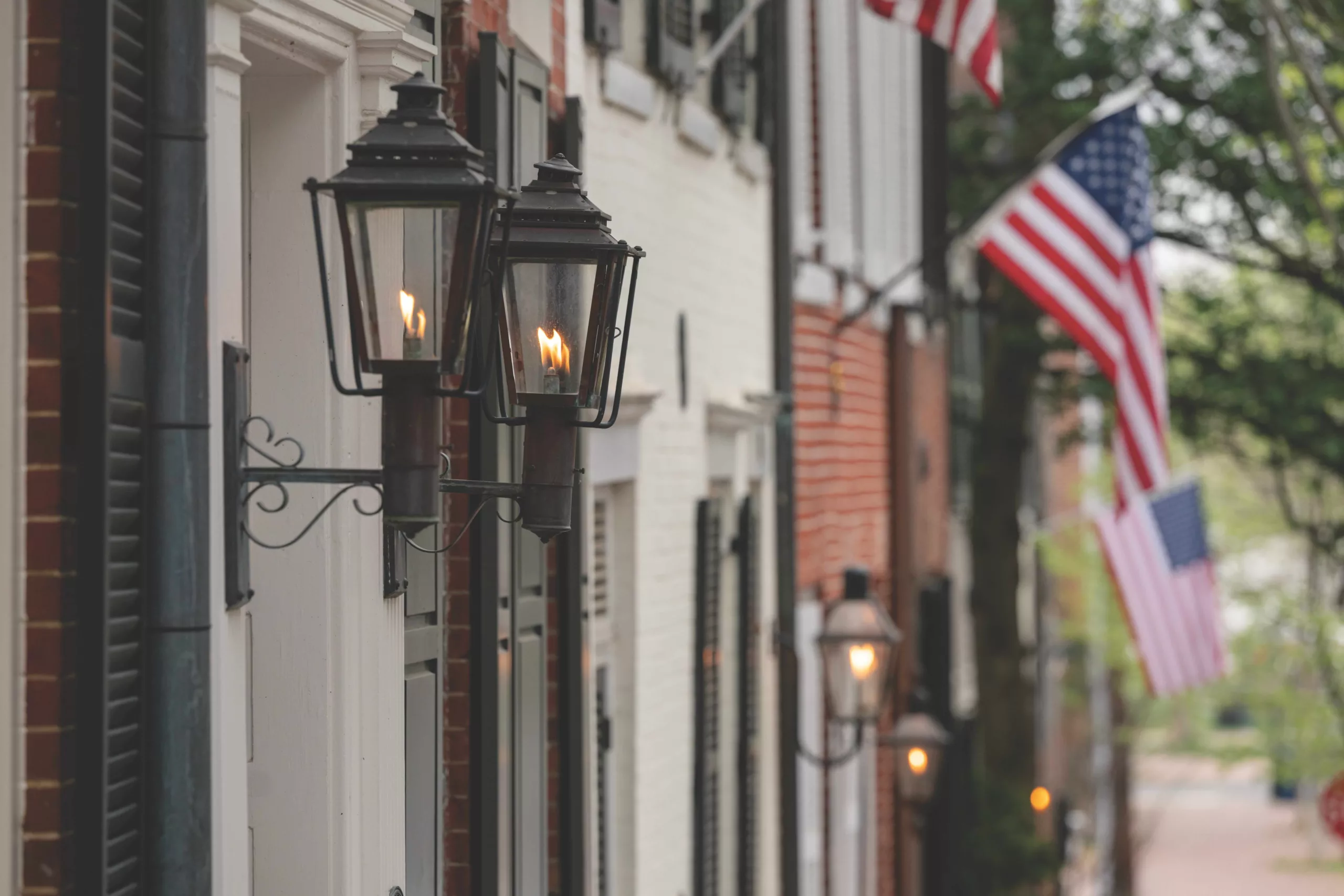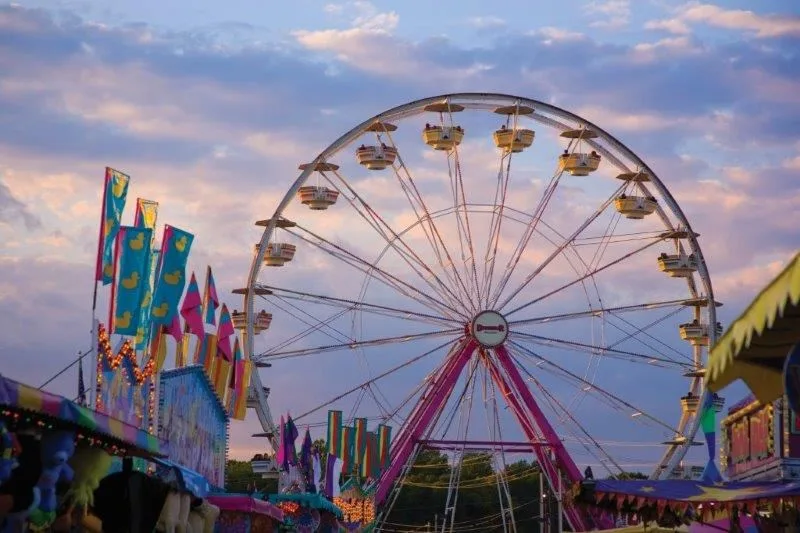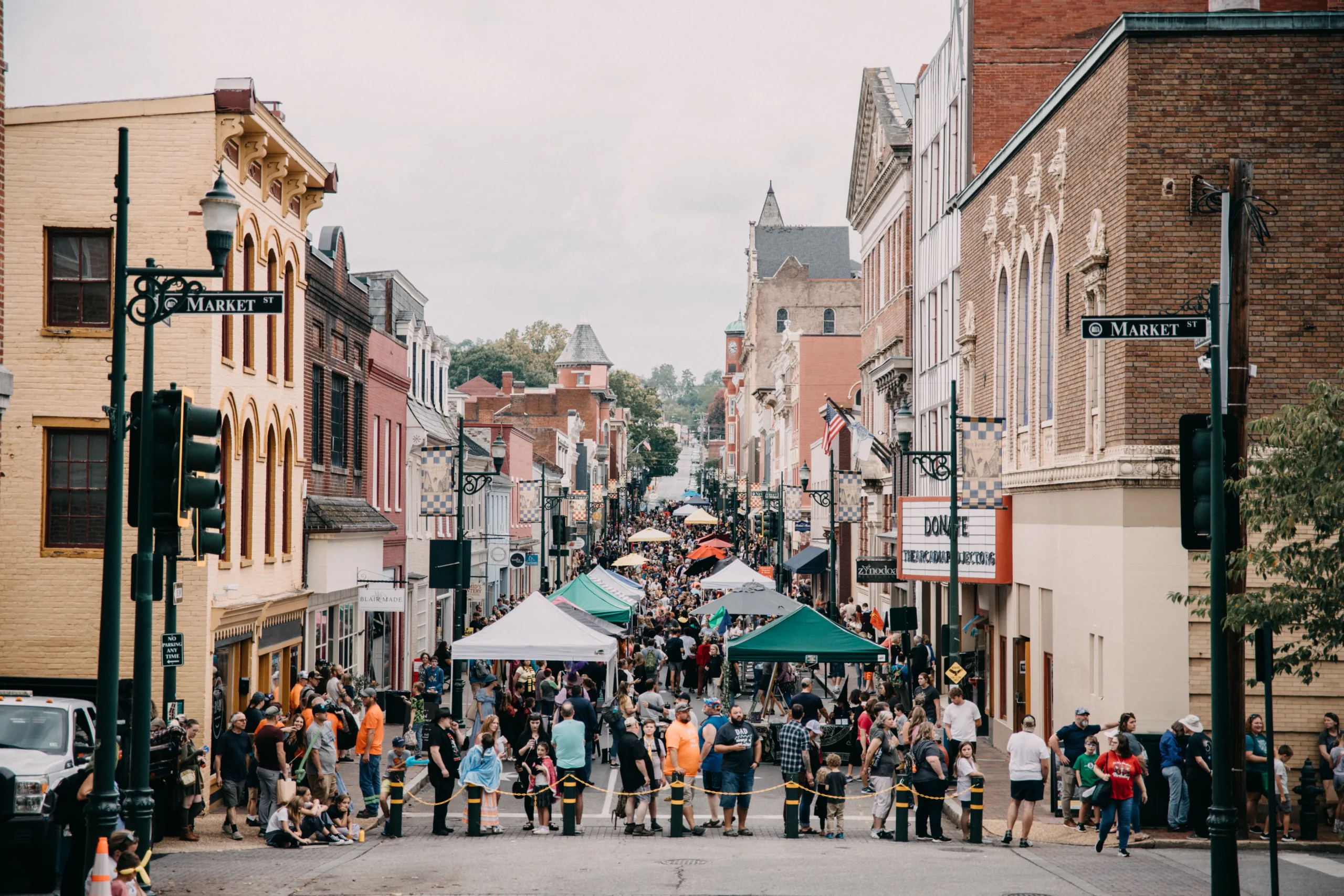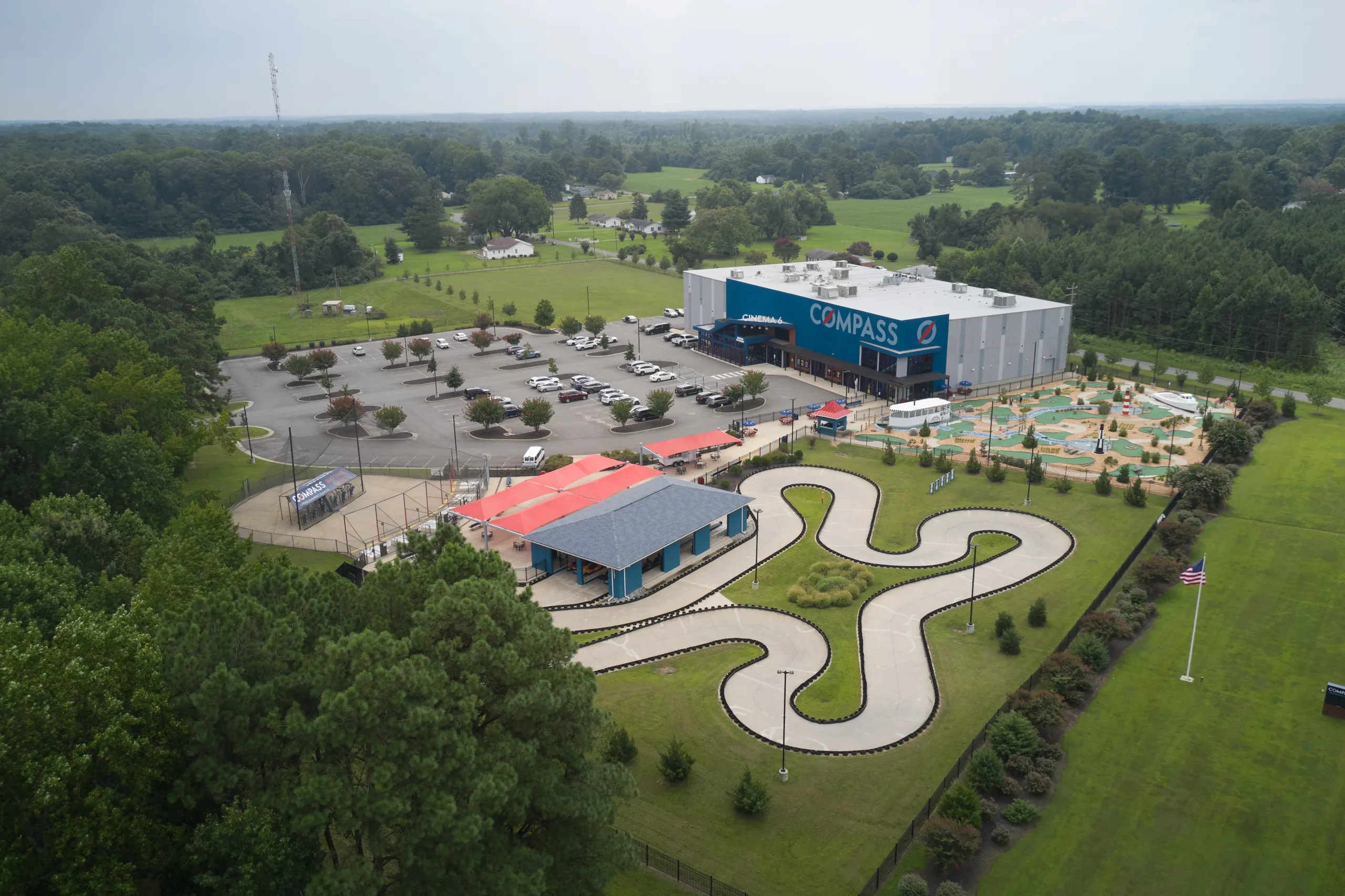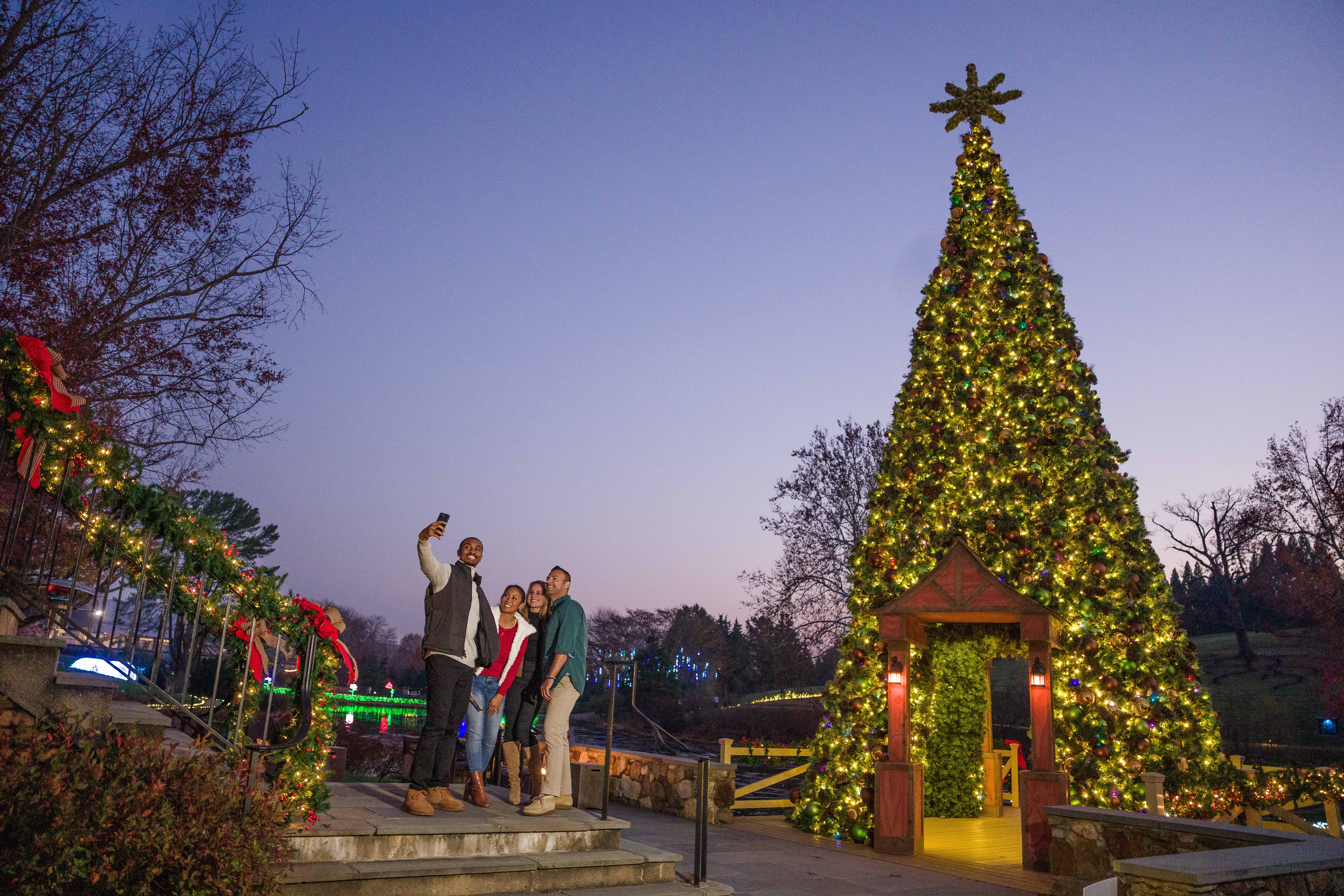Entering Old Town Alexandria feels like someone waved a magic wand after navigating the notorious mixing bowl of I-95: Suddenly, it’s all worth it. The sun shines through the tree-lined streets between Georgian, Federal, and mid-century modern homes, and ivy-covered bricks welcome me. I have eight hours before returning home, so my wide eyes absorb every detail.
Fresh vegetables, waterfront paintings, and everything in between cover Montgomery Park as children blow bubbles and couples hold hands—the scene is like a modern-day version of Georges Seurat’s “A Sunday on La Grande Jatte.” The Old Town Farmers’ Market surrounding me is the oldest in the country held continuously at the same site; George Washington sent his produce from Mount Vernon to be sold at this very spot.
From here, brick sidewalks lead me to King Street, where bustling businesses open their doors to hundreds of passersby on this sunny Saturday morning. I nurse my steaming “Alexandria Fog” from Dolci Gelati—cinnamon cardamom tea steeped in almond milk with nutmeg, a play on the classic London Fog. It’s a fitting choice for the day.
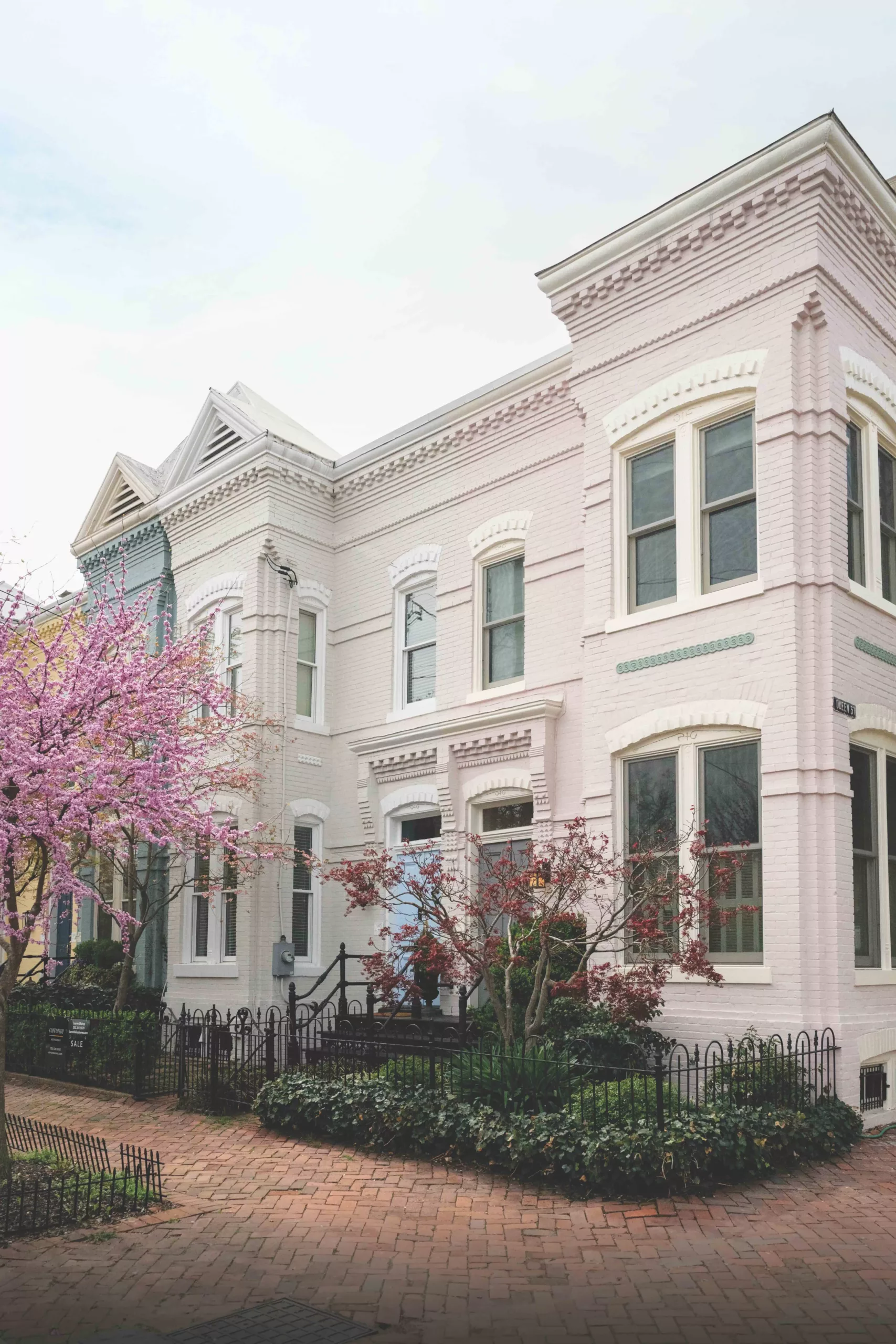
Adventure Begins
Capt. John Harper followed the sea from Philadelphia to Alexandria and developed a stretch of Prince Street in the 1780s. Today, stepping on the cobblestones of Captain’s Row is like being transported back in time. This block in the heart of Old Town is one of its most picturesque streets, with neat and tidy Federal townhouses, bunting flags, glinting shutters, and stately trees.
Every step is worth taking here, so I wander and admire the architecture and the landscape, noticing the myriad details I discover down each street. The City of Alexandria’s markers explain the historic significance of many, like the stone mounting blocks that made mounting and dismounting horses and carriages easy. House features include star bolts dotting the façades that support the masonry structures, preventing them from buckling. There are fire mark seals that were likely placed for insurance companies’ advertisements, decorative door knockers that signaled wealth, plus gas lanterns, hitching posts, and weathervanes.
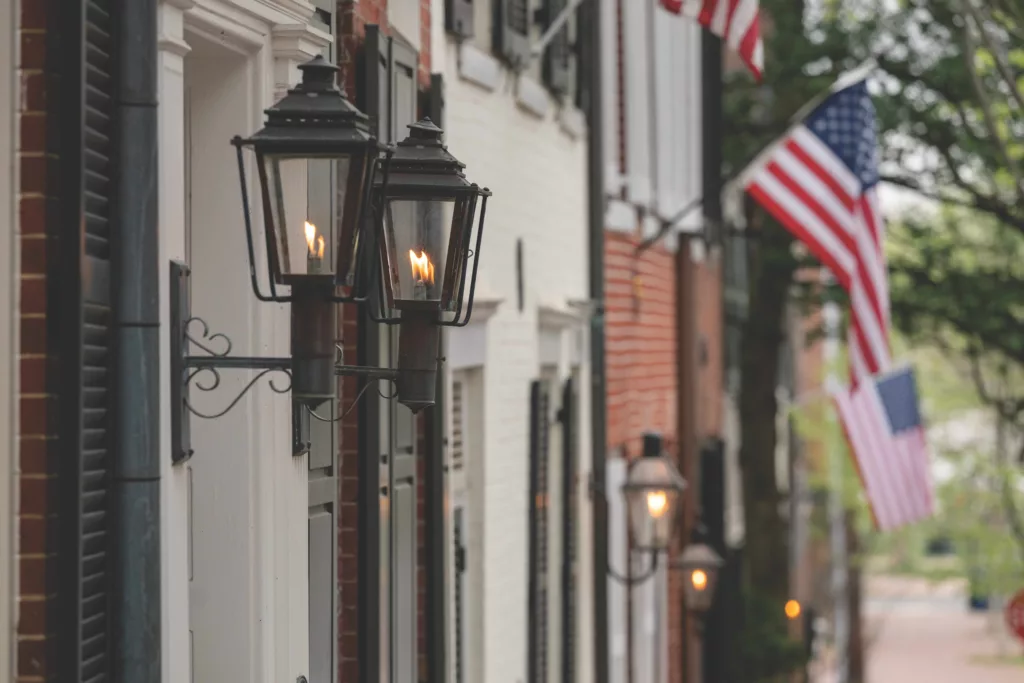
Gas lanterns and cobblestone streets are icons of Old Town.
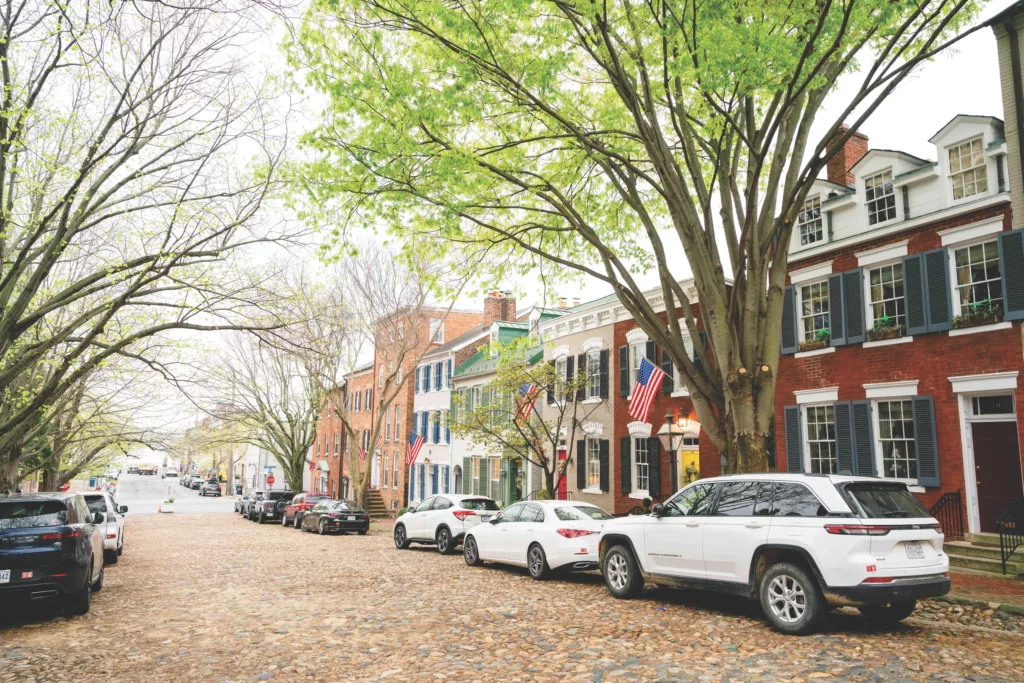
Captain’s Row, one of Old Town’s most famous and picturesque residential streets.
Yet even more spots preserve the past, like the Stabler-Leadbeater Apothecary Museum, which looks frozen in time. It’s a time capsule, with most of its structure original to its heyday when it flourished during the 19th century. The shelves are stocked with vials and jars, some with the same contents as centuries ago—from herbals and medicinals to poisons like chloroform, formaldehyde, and iodine.
Apothecaries are the precursor to modern pharmacies, although patients of old often skipped a trip to the doctor’s office, choosing instead to proceed directly to the apothecary to be treated by the local pharmacist. Bloodletting, for example, was a common practice, and the museum’s exhibits include the various contraptions and devices used for this wildly popular therapeutic technique of the day. The apothecary operated in the heart of Old Town from 1792–1933.
Click here to learn more about the Stabler-Leadbeater Apothecary Museum
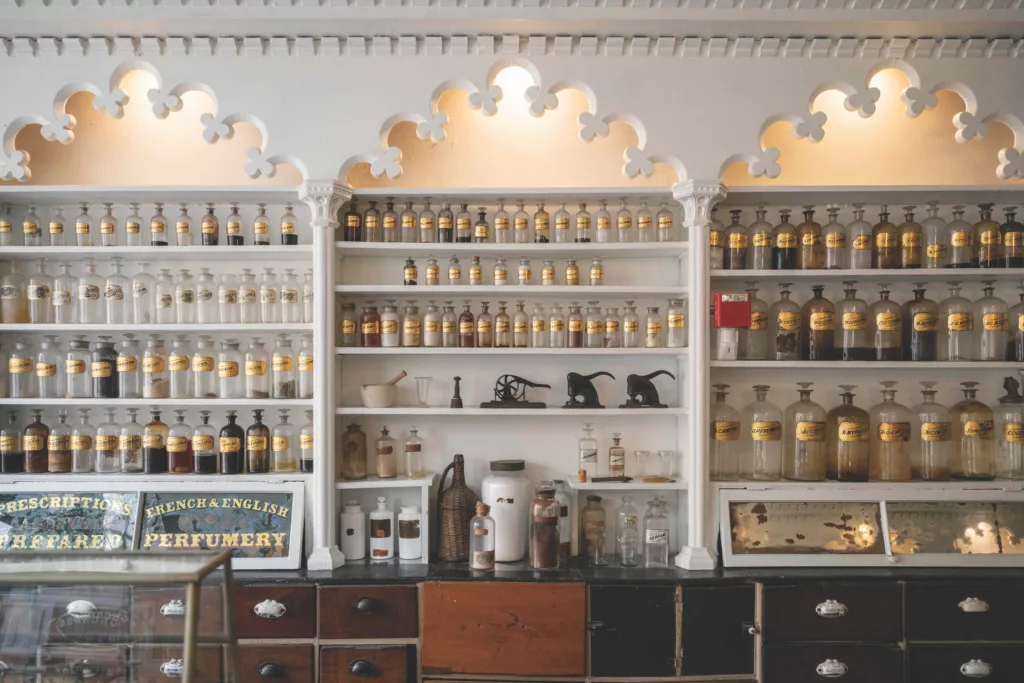
Shaping the Republic
My imagination shifts to overdrive as I picture these timeworn establishments at their peak. Gadsby’s Tavern Museum, established in 1785, recreates historic scenes of a town brimming with political and economic energy. “The young Republic began to take shape through the conversations and choices being made within the spaces of Gadsby’s Tavern Museum—choices that still impact us today,” says Liz Williams, deputy director of the Office of Historic Alexandria.
Each ballroom and bedroom at Gadsby’s illustrates what a day at the tavern would have looked like in Colonial times. Many D.C. and Alexandria celebrations took place in the ballroom where I stand. George Washington even attended his birthday celebrations at Gadsby’s from 1798–99, known as the Birthnight Ball.
“My Grandparents & self went up to Alexandria to attend the celebration of Birthnight. The room was crowded, there were twenty five or thirty couples in the two first setts … We danced until two o’clock [a.m.],” reads a letter by Martha Washington’s granddaughter, Nelly Curtis, on display in the museum. I picture the flurry of dancing feet—and briefly consider rebranding my birthday as my very own Birthnight Celebration.
Furnished rooms reveal vignettes of yesteryear’s guests, including their suitcases and breakfasts—what they packed for their journeys and the meals they ate. According to Michele Longo, director of education and museum operations at the Office of Historic Alexandria, visitors’ favorite fun fact is that Thomas Jefferson’s overnight stay at the tavern during the contentious 1800 election season led to the infamous duel between Alexander Hamilton and Aaron Burr.
History is around every corner, and the Potomac watches over it all. I make my way toward the wharf for lunch.

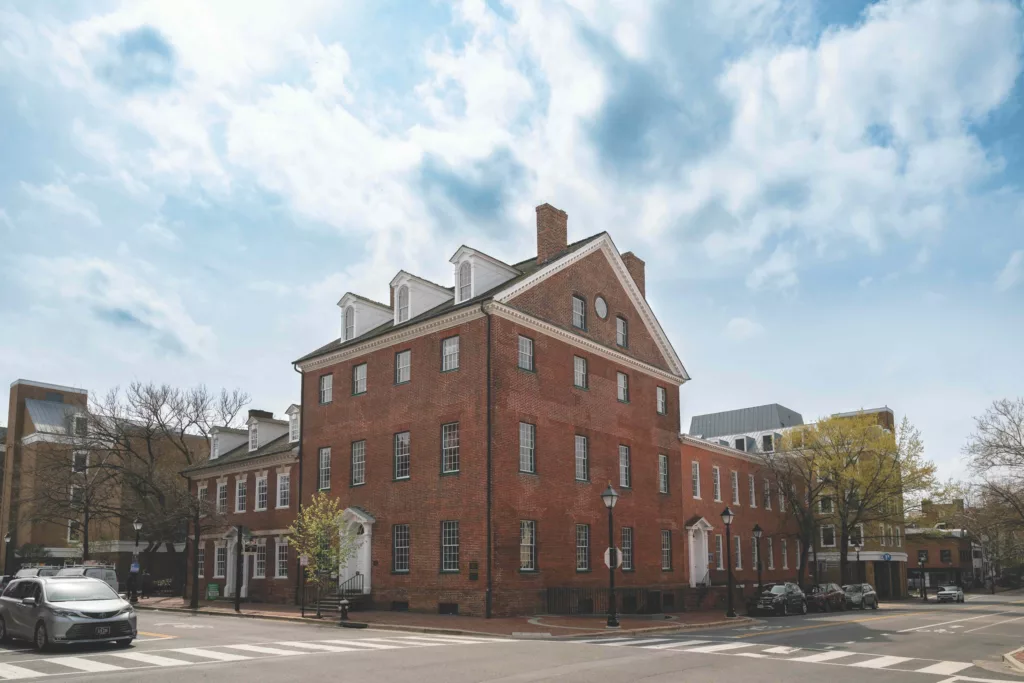

Portrait of John Gadsby, who operated Gadsby’s Tavern from 1796—1808, by his grandson, John Gadsby Chapman, 1808—1889.

A guest bedroom upstairs at Gadsby’s Tavern welcomed weary patriots of the day.
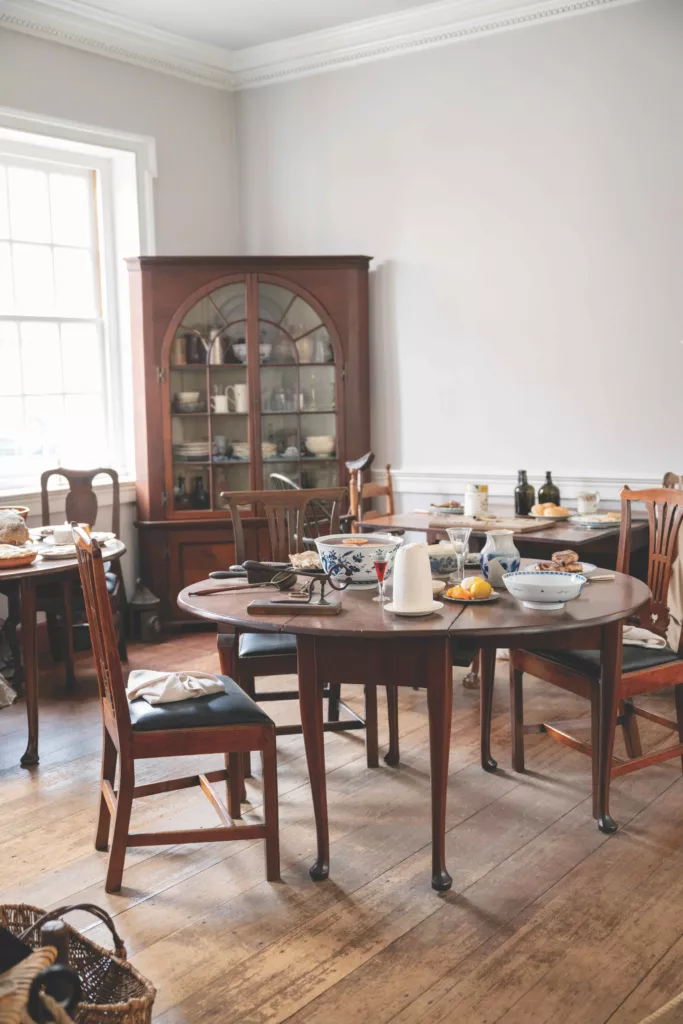
Gadsby’s Tavern dining room.
Smoked (Paprika) on the Water
Ada’s on the River, a modern American culinary experience, is inspired by the pioneering spirit of Ada Lovelace—a 19th-century English mathematician, often called the first computer programmer. The restaurant is charming, colorful with elegant décor, and offers the best ornament of all: Alexandria’s bustling waterfront. The views, the inventive menu, and portraits of some of my heroines—Jane Austen, Mary Shelley, and Emily and Charlotte Bronté—make my trip to Ada’s even more special.
The crispy hash browns I order are paved with smoked paprika aioli and make the perfect appetizer. Next up is my main dish: smoked ricotta gnocchi with vegan sausage ragú and shallots.
Each bite is sublime. Next to me, I watch as a plate of steamed blue mussels with harissa tomato broth and perfectly grilled rustic bread arrives. It’s a dish that will make even a vegetarian like me want to switch sides.
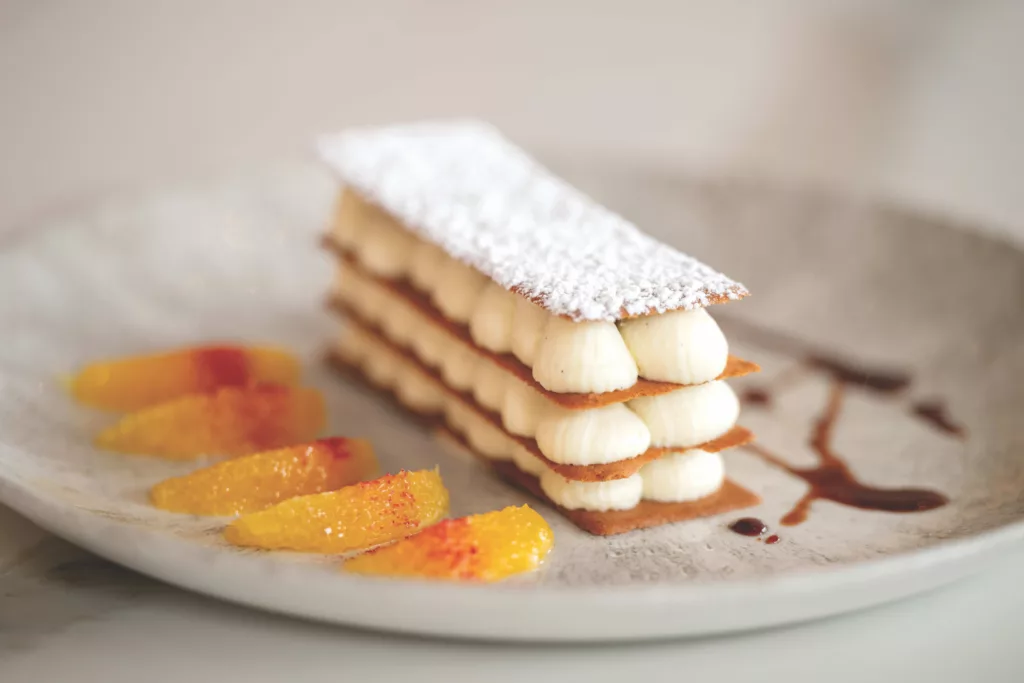
Cheesecake Tower features whipped cheesecake, graham tuiles, oranges, powdered raspberries, and a pomegranate reduction.

Ada’s Giant Crab Cake stars jumbo lump crab, creamed leeks, pickled shallots, greens, and preserved lemon remoulade.
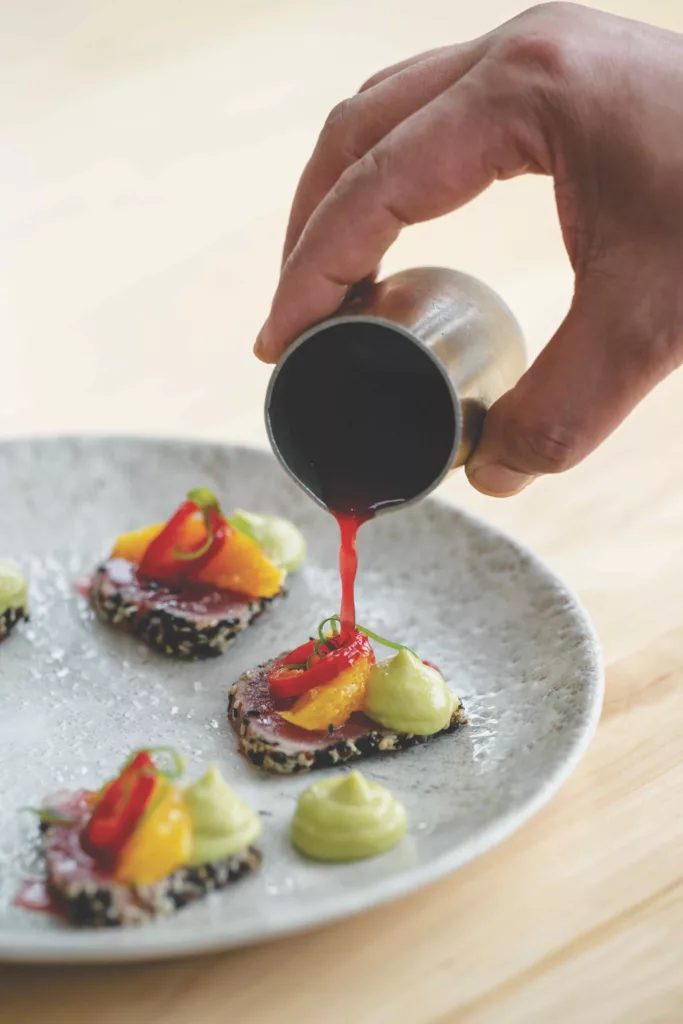
Seared tuna with avocado mousse, citrus, green onions, sesame seeds, and blood orange soda.
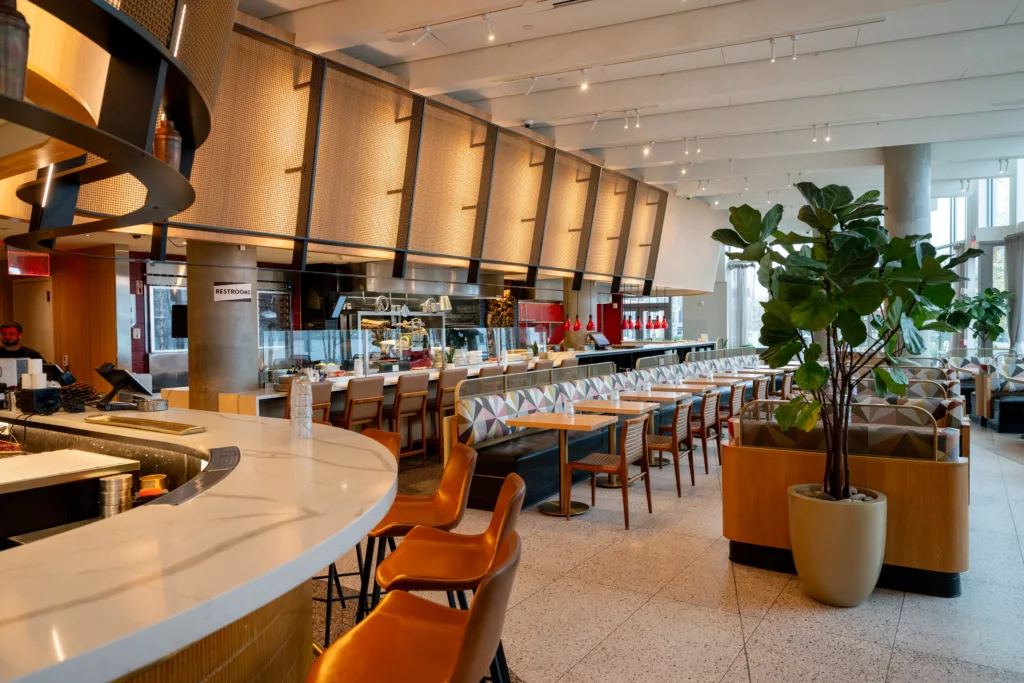
Natural & Artistic Connections
What’s a better post-lunch stroll than through the Torpedo Factory Art Center galleries? Founded in 1974, the center is the country’s largest collection of working artists under one roof—one that used to literally house a torpedo factory, originally known as the U.S. Naval Torpedo Station and munitions storage facility that was built around 1918.
Inside, and when I step up to any museum painting, I wish I could talk to the artist. Kandinsky, why did you choose this color? Klimt, what’s the story behind this woman? Pollock, do you really throw cans of paint?
A piece of art can dredge up a rainbow of questions, and the magic of the Torpedo Factory is that each room is its own world. Every medium is represented in the multi-story center—painting, sculpture, fiber arts, ceramics, printmaking, and more—and the best part is getting to know the minds behind the pieces. Often, the studios are a clear reflection of the art style, and the personalities behind them are delighted to answer any questions.
The challenge is making it through every gallery—and not spending myself blind.
Outside, the Torpedo Factory’s sidewalk along the waterfront brims with people flowing in and out of surrounding businesses—restaurants, markets, and galleries. With my creativity properly ignited, as the Torpedo Factory tends to do, I make my way to Founders Park, just two blocks up Union Street.
It’s a welcome oasis after a busy day. The marina rests along its southeastern corner, and over-water gazebos provide the perfect shelter for rest, relaxation, or conversations. The park’s paths are scenic, weaving through carefully tended gardens and spots to enjoy picnics, volleyball, walk dogs, and enjoy fresh air along the Potomac.
Simply sitting on a bench, watching the ducks nap on boats, provides the perfect ending to a perfect day—and I can’t wait until I’m back.
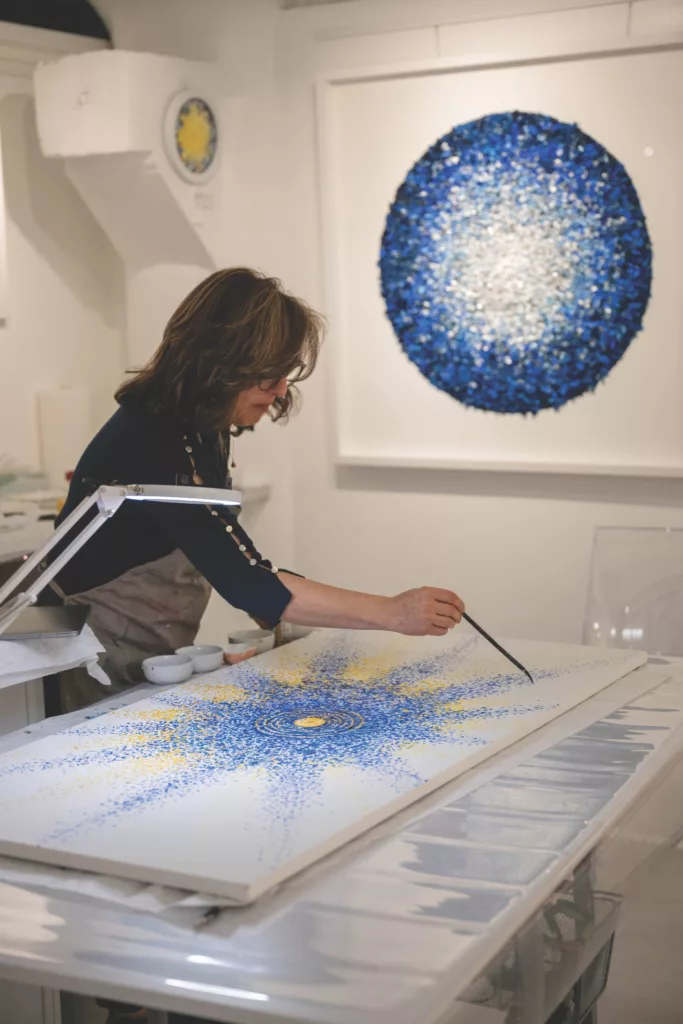
Artist Saya Behnam at work in her studio.
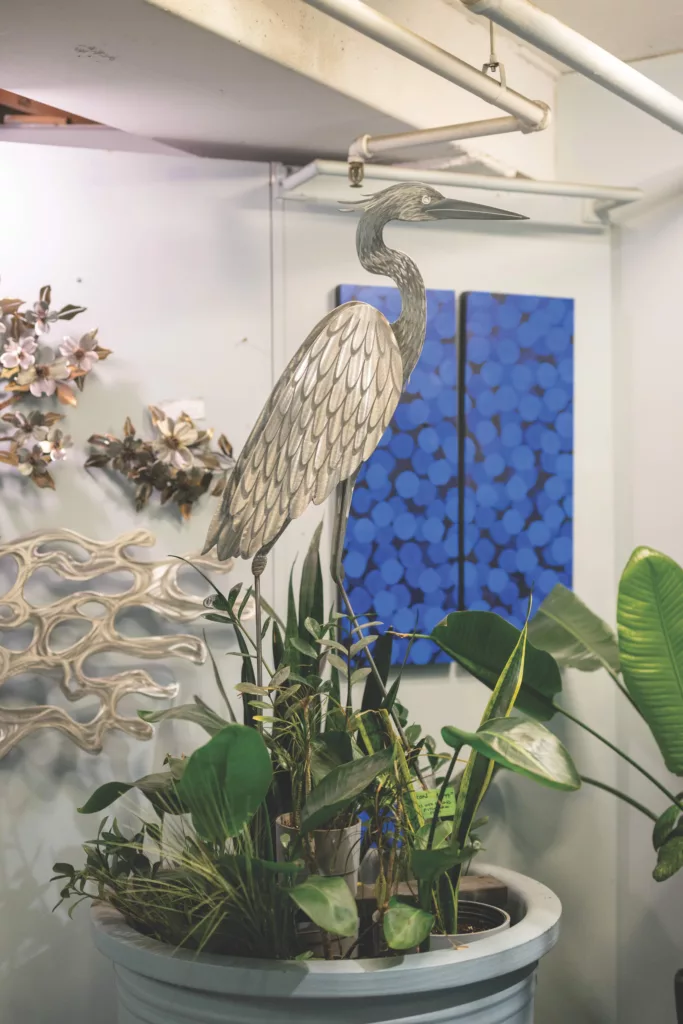
“Blue Heron” by Chris Erney.
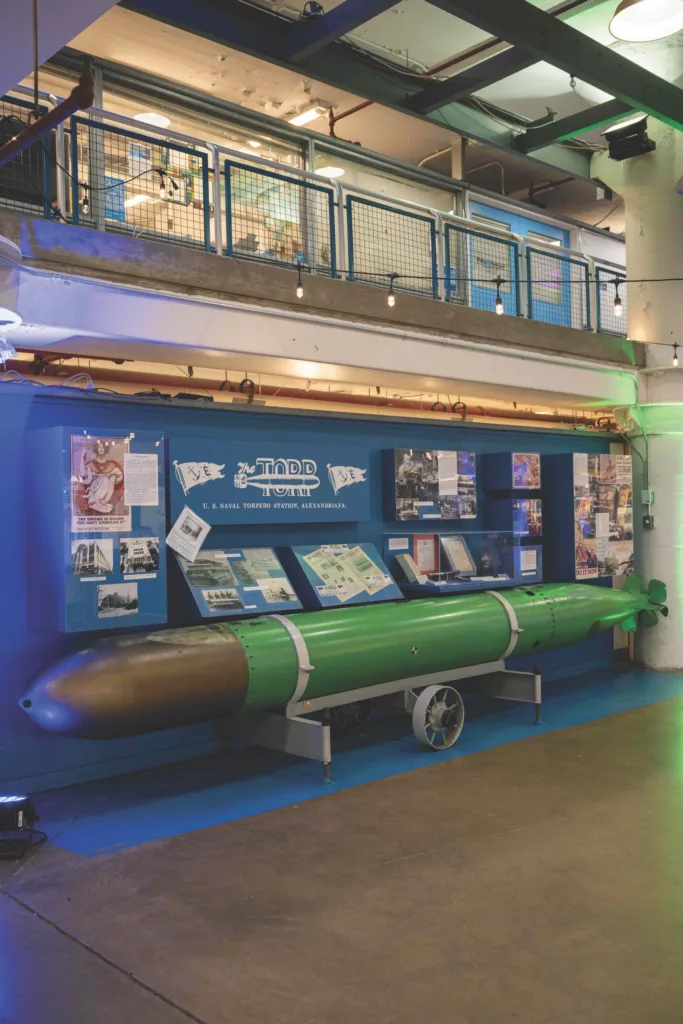
An exhibit features a torpedo produced at the factory during its heyday.
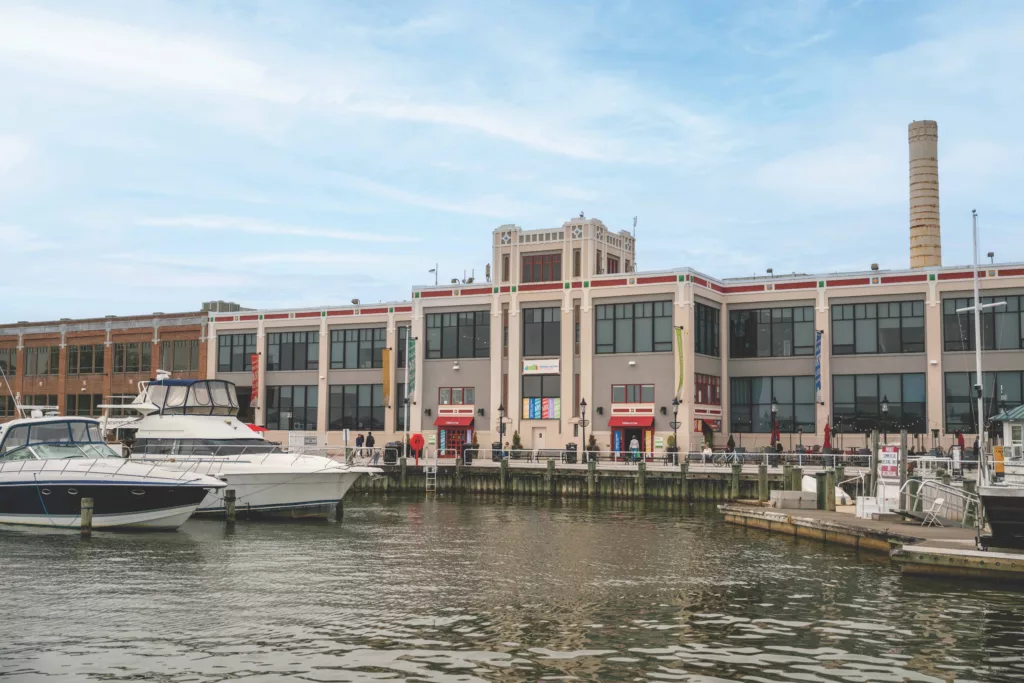

The Art League hosts a private figure painting class at the Torpedo Factory.
Tour. Visit. Explore. Shop.
More of what not to miss in Alexandria.
Gossypia, 325 Cameron St.
The oldest boutique in Old Town, offering eclectic clothing and art. Gossypia.com
River Farm, 7931 E. Boulevard Dr.
Part of George Washington’s original farmlands and now the American Horticulture Society’s headquarters, River Farm features a beautiful estate, stunning gardens, and the perfect view of the Potomac River. AHSgardening.org/RiverFarm
King Street Boutiques
More than 100 independently owned shops are in a walkable mile along King Street. Find it all—from designer shoes to home décor. Or indulge in a candy crawl with its many ice cream shops, cupcakeries, and chocolate shops.
Carlyle House Historic Park, 121 N. Fairfax St.
Take a guided tour through this historic property, featuring the architecturally unique manor house, c. 1753, and its lush gardens. NoVaParks.com
George Washington’s Mount Vernon, 3200 Mount Vernon Memorial Hwy., Mt Vernon
Our nation’s first president’s home, farm, gardens, and personal distillery. MountVernon.org
Huntley Meadows Park, 3701 Lockheed Blvd.
From wildlife to wetlands, this park will amaze you, along with trails and a historic villa built for Thomson Francis Mason, the mayor of Alexandria from 1827–1830.
FairfaxCounty.gov/Parks
All Aboard!, Alexandria City Marina, 105 N. Union St.
Take a water taxi into D.C., a sightseeing cruise to Mount Vernon, or National Harbor—all from Alexandria City Marina. Or enjoy a sunset sail about the tall ship Providence. CityExperiences.com, VisitAlexandria.com
Spite House, 523 Queen St.
The skinniest historic home in the United States—at 7-feet-wide—was built in an alley to block loiterers, peeping Toms, and snoopers.
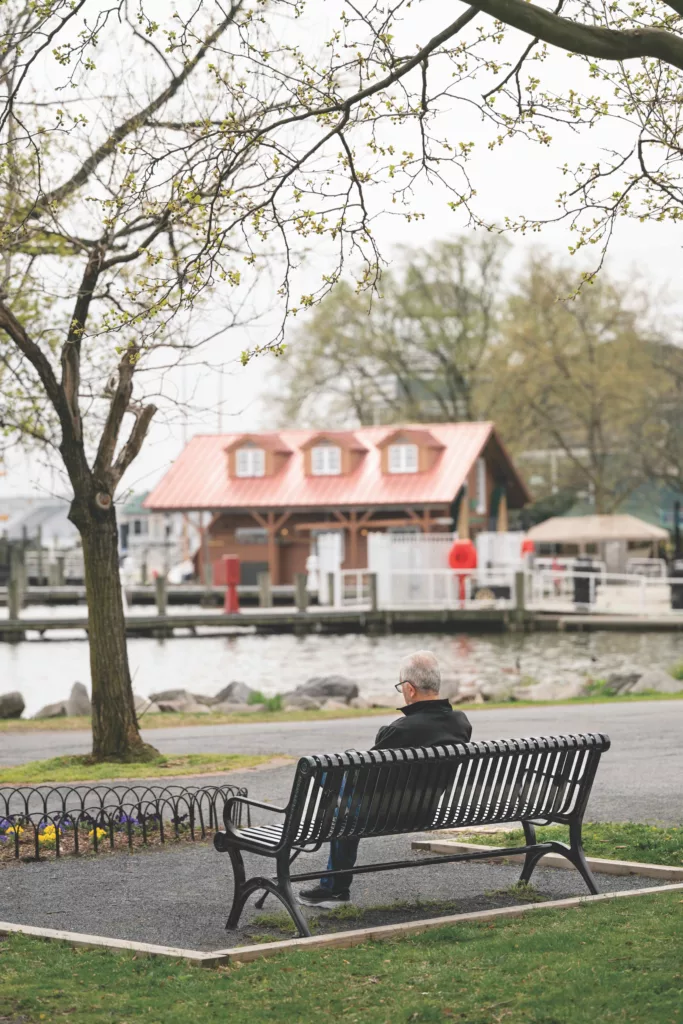
Founders Park.

Spite House, possibly the world’s most narrow residence.
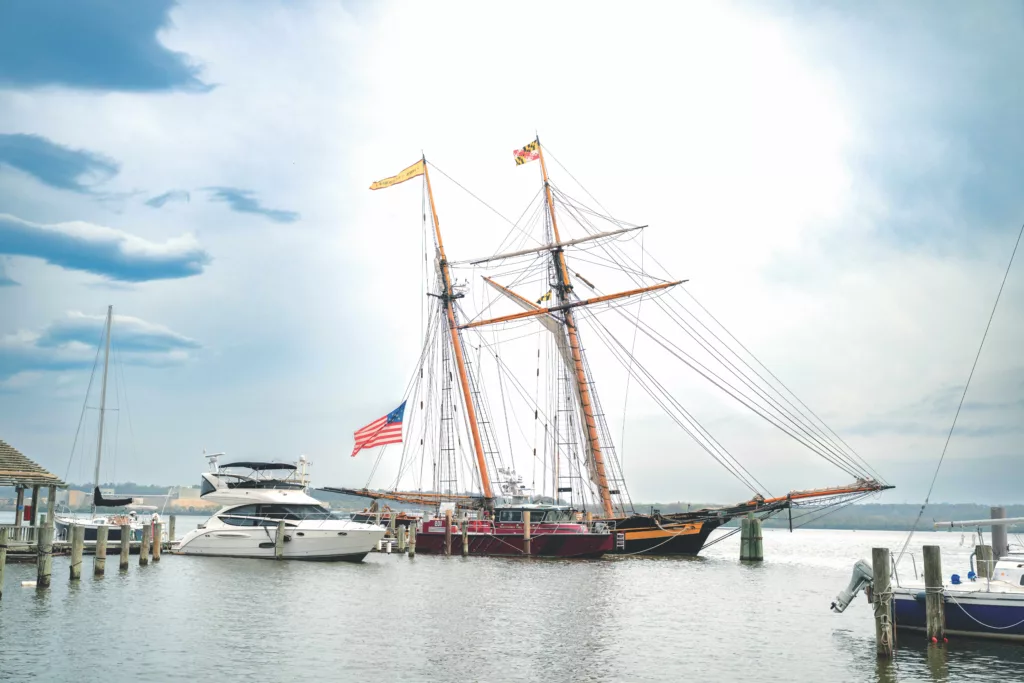
The topsail schooner Pride of Baltimore II is moored in Alexandria’s marina.
This article originally appeared in the June 2025 issue.

